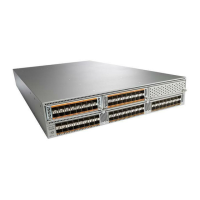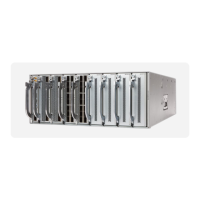Note
•
If some of the FEX ports are being used by a SPAN session as source ports, the remaining FEX ports
cannot be a part of a different SPAN session.
•
The maximum number of source ports per SPAN session is 128 ports.
•
The maximum number of SPAN sessions supported on the Nexus 5000 Series and Nexus 5500 Series
switches is 4.
•
The maximum number of SPAN sessions supported on the Nexus 5600 Series and Nexus 6000 Series
switches is 16.
SPAN Destinations
SPAN destinations refer to the interfaces that monitors source ports. The Cisco Nexus Series device supports
Ethernet interfaces as SPAN destinations.
Dest SPANSource SPAN
EthernetEthernet
Ethernet (FCoE)Virtual Fibre Channel
Characteristics of Destination Ports
Each local SPAN session must have a destination port (also called a monitoring port) that receives a copy of
traffic from the source ports, VSANs, or VLANs. A destination port has these characteristics:
•
Cannot be a source port.
•
Cannot be a port channel or SAN port channel group.
•
Does not participate in spanning tree while the SPAN session is active.
•
Is excluded from the source list and is not monitored if it belongs to a source VLAN of any SPAN
session.
•
Receives copies of sent and received traffic for all monitored source ports.
•
The FEX interface cannot be a span destination.
Multiple SPAN Destinations
Local SPAN and SPAN-on-Drop sessions can support multiple destination ports. This allows traffic in a single
local SPAN session or a SPAN-on-Drop session also to be monitored and send to multiple destinations.
Cisco Nexus 5600 Series NX-OS System Management Configuration Guide, Release 7.x
OL-31641-01 177
Configuring SPAN
SPAN Destinations

